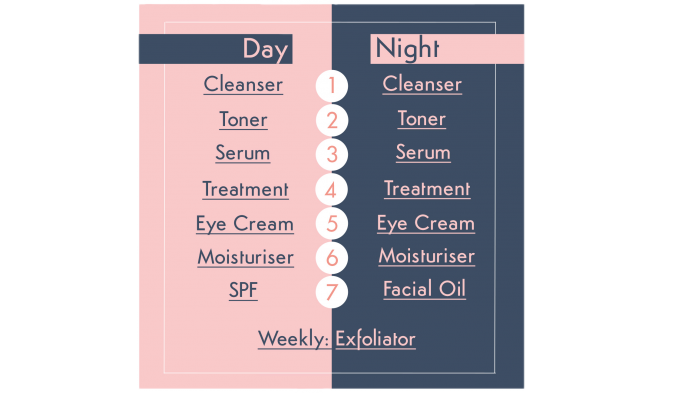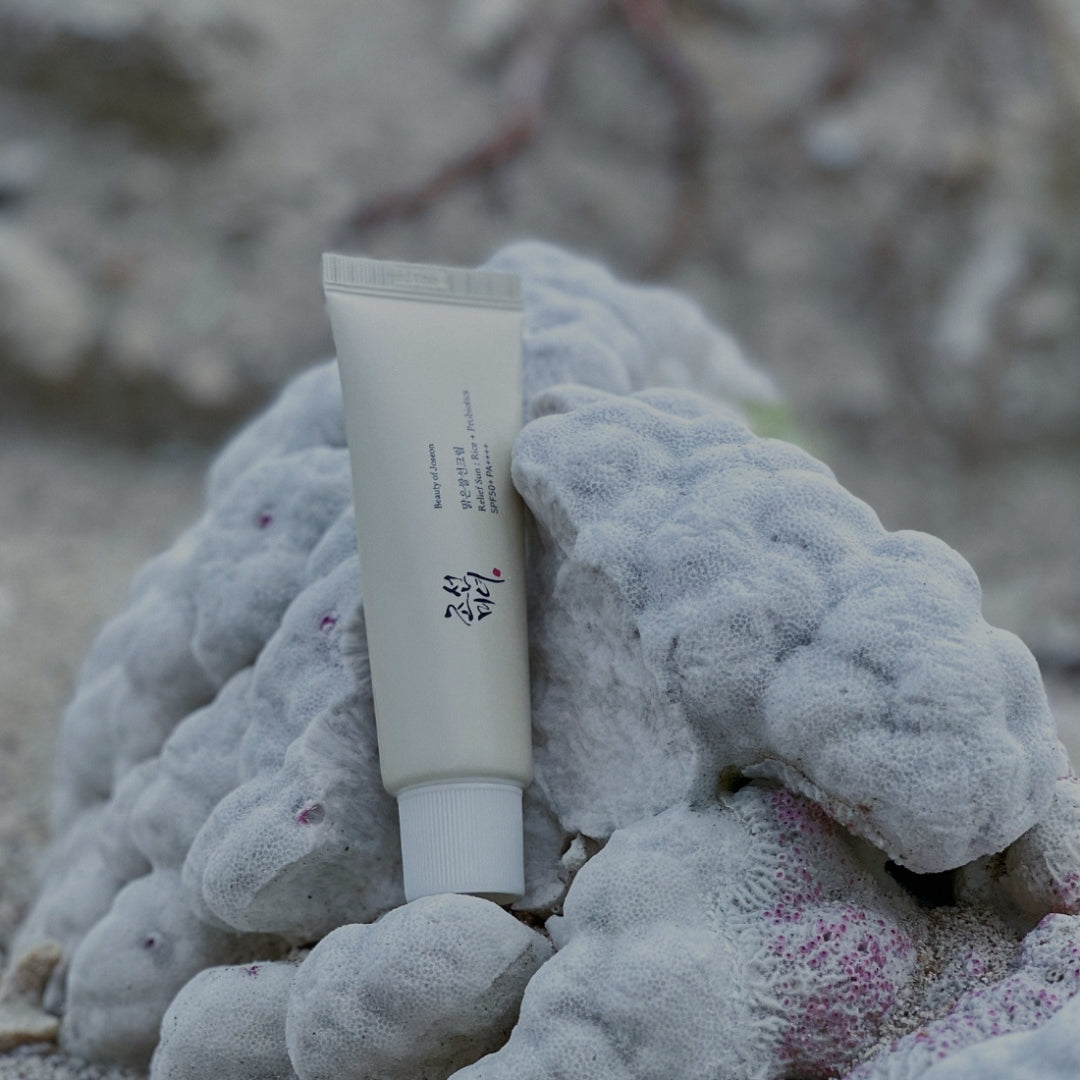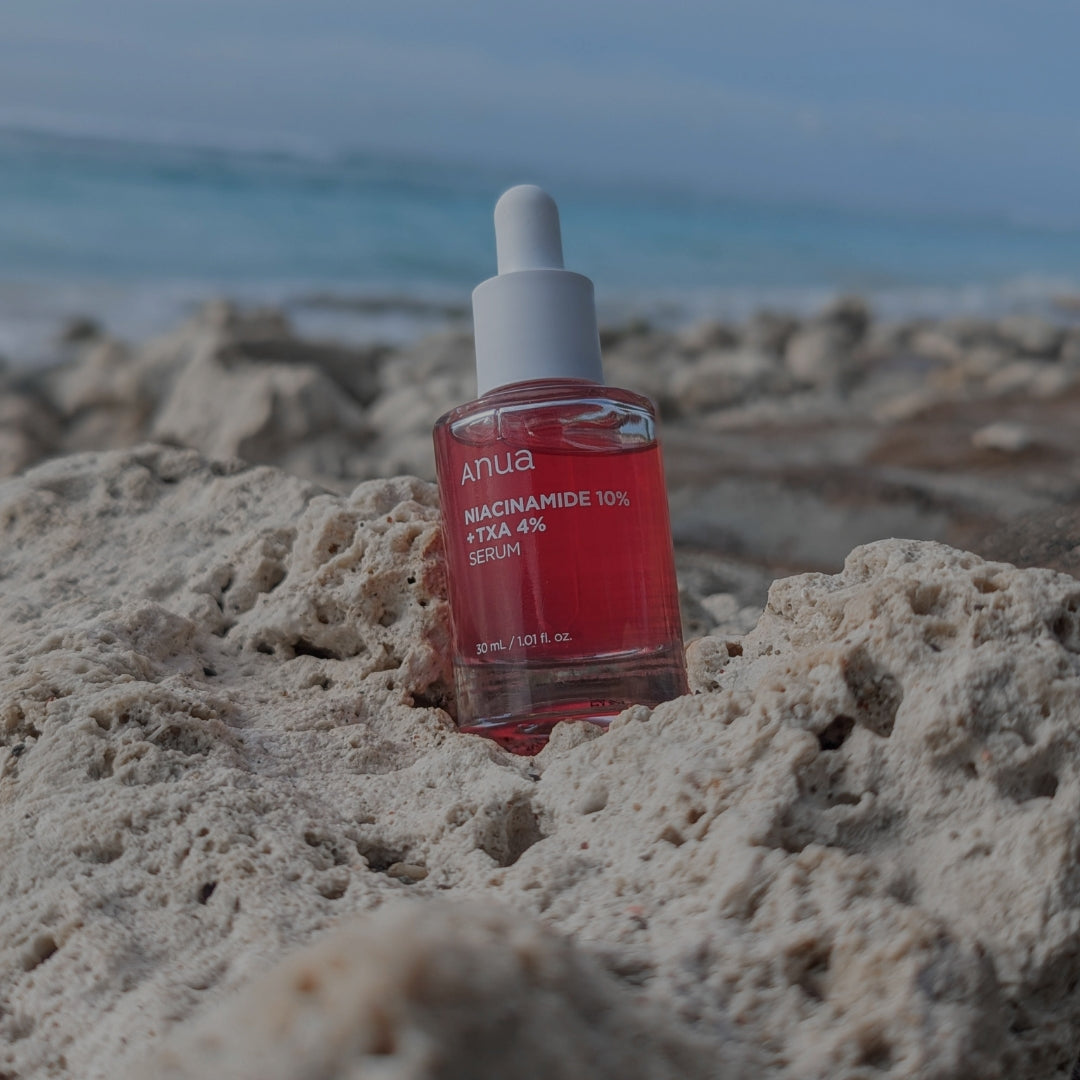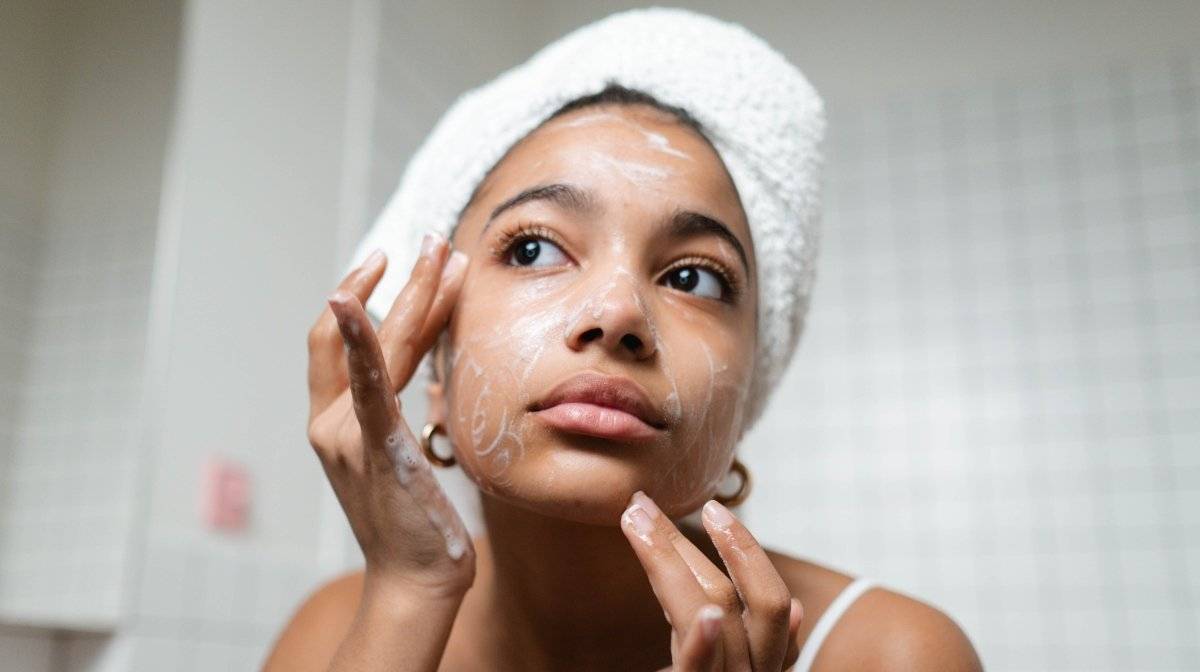The Best Order For Skincare

Skin Care Routine: Step By Step
Cleanse: The First Step
- The first step in any skin care routine should always start with cleansing. Regular cleansing removes dirt, oil, makeup, and sunscreen and sets the stage for what the skin will receive, in terms of products, next. While most skin types benefit from morning and evening cleansing, those with dry skin may find a two-times-per-day face-washing routine a bit harsh. In that case, you can tailor how frequently you wash your face based on its needs, but never skip your evening cleanse to remove the day and everything the skin encounters throughout the day.
- Choosing a skin-friendly cleanser is of extreme importance. Washing the skin with the wrong cleanser can cause a disruption of oil and moisturize and even leave the skin feeling tight or itchy. Gentle, hydrating cleansers with minimal ingredients are always a safe bet since almost every skin type can safely handle them. From there, if necessary, you can select a cleanser that further targets specific skin conditions like dryness, breakouts or even discoloration. Just make sure that the cleanser you ultimately settle on is not drying, strips the skin of its natural oils or compromises the skin’s protective barrier.
Tone: Balance the Skin
- After cleansing the skin thoroughly, it’s time to apply a liquid toner. The purpose of a toner is to help balance the skin and its pH levels so that the skin’s pH levels are at an optimal state and add back hydration to the skin, too. Plus, a skin-appropriate toner can help other products in your skincare routine to properly absorb. The order of your skin care routine should always consist of using a toner directly after cleansing.
- You can apply a toner with your fingers, a cotton round or even spray it onto the skin. For toner to work its magic and balance out the skin’s pH levels, making it harder for bacteria to live on the skin, the toner must fully immerse into the skin, so you may need to wait a few minutes between applying a toner and moving onto the following skin care routine steps. Most of today’s toners are alcohol-free (make sure to read the ingredient list!), and instead of stripping the skin of its natural oils and having a drying, astringent-like effect, they help to nourish the skin and leave it with a natural glow. Look for toners with alpha and beta hydroxy acids, hyaluronic acid, green tea, and vitamins C and E to support the skin and hydrate it.
Apply a Serum: Target Specific Concerns
- Skincare serums, which you can use both morning and night, are a critical component you’ll want to consider when building your skincare routine. These skin-specific products treat and protect the skin while delivering powerful active ingredients to target many skin issues ranging from dark spots and fine lines to hyperpigmentation and pollution damage. You can even layer different serums onto the skin as part of your skincare routine to address multiple concerns.
- Many serums contain supercharged active ingredients such as antioxidants like vitamin C, essential for protecting against free radicals and environmental damage. Other popular ingredients in serums include hyaluronic acid for combatting dry, dull skin and adding a plumping effect, peptides to increase skin firmness and stimulate new collagen, retinoids for an anti-aging and skin-smoothing effect, and niacinamide, which helps quell inflammation, redness, and breakouts and brighten and even out the skin. If your serum is water-based, apply it first before a moisturizer; if it’s oil-based, layer it over your regular moisturizer.
- You don’t have to have a specific skincare issue to make a serum a step in your skincare routine (when that’s the case, stick with an antioxidant-rich protective one to help limit premature aging). Since serums are chock-full of powerful, skin-friendly ingredients, all skin types benefit from them.
Moisturize: Lock in Hydration
- All skin types, even oily complexions, need moisture in some form. The basic principle behind any moisturizer, no matter how light or rich it is, is to rehydrate the skin and soften it by preventing water loss. Using a skin-appropriate moisturizer morning and night is essential to keep the skin well-hydrated, plump and protected, especially since the skin loses its natural ability to retain moisture with age.
- For many skin types, a non-comedogenic, oil- and fragrance-free moisturizer will do the job, but you can also apply a moisturizer with additional ingredients that target a specific skin need. Powerful moisturizer ingredients include ceramides, which create a strong skin barrier, and hyaluronic acid to plump and rehydrate the skin. Dry, more mature skin may naturally gravitate towards heavier moisturizers with occlusives and emollients, while oily and acne skin types usually prefer to quick-to-absorb lightweight lotions and gels.
Layer on Eye Cream: Gentle Care
- While you may be tempted to apply your moisturizer under your eyes, don’t. The skin on and around the eyes is thin and extremely delicate and easily irritated and calls for different textures and ingredients than a face moisturizer—plus, eye creams are formulated to address specific eye-related concerns like puffiness, fine lines, dark circles and undereye bags and a lack of skin firmness.
- Eye creams that contain vitamin C and K and niacinamide will help with dark circles, which are due to visible veins and blood pooling, while those with caffeine can help take down puffiness (store it in the fridge for an extra dose of anti-puffing action). If fine lines and wrinkles or thin saggy skin are more of a problem, consider eye creams containing retinol and peptides that will help strengthen the skin via collagen and elastin production. Dry skin on and around the eyes respond well to hydrating eye creams with ingredients like ceramides and hyaluronic acid. No matter which eye cream you use, caring for the skin on and around the eyes is critical. Apply eye cream to the eyes with your ring finger and gently tap it into the skin rather than tugging at it or applying too much pressure.
Add Sunscreen: Your Daily Shield
- Not a day should go by where you don’t wear sunscreen. An essential skin care routine step, sunscreen is a must for protecting the skin from harmful UV rays, even when the weather doesn’t look promising or you are spending time indoors since UV rays can still penetrate the skin through windows. Failing to protect the skin from the sun’s damaging effects is the number one reason the skin ages prematurely. That’s why daily, consistent use of sunscreen is imperative to prevent the formation of fine lines and wrinkles, discoloration, premature aging, textural changes, and even skin cancer.
- There are two types of sunscreens: chemical sunscreen and physical (mineral) sunscreens. Chemical sunscreens, which are more transparent on the skin, contain chemical ingredients that absorb UV light, whereas physical sunscreens, some of which can leave behind a white cast, rely on mineral ingredients to reflect the UV light off the skin. Some sunscreens contain chemical blockers, while others have just physical blockers, and then some formulations contain a combination of both. Sensitive skin types tend to find mineral sunscreens less irritating.
- To make the most of your sunscreen efforts, apply a nickel-sized amount of broad-spectrum sunscreen with an SPF of at least 30 (it should always be the last step in your skincare routine) to your face, neck, ears, and the backs of your hands and two tablespoons to exposed parts of your body about 30 minutes before going outside and then reapply it every two hours. And if you’re skincare routine focuses heavily on brightening and evening out the skin to do away with hyperpigmentation, daily use of a broad-spectrum sunscreen is a must. Otherwise, you can consider your efforts null and void.





2 comments
Sama
This is very helpful ☺️
Jadhulla
Good
Leave a comment
This site is protected by hCaptcha and the hCaptcha Privacy Policy and Terms of Service apply.